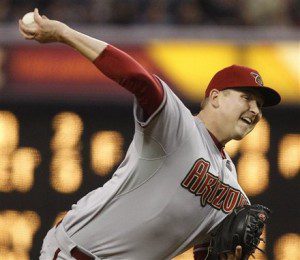
I like to consider myself something of a fantasy sports junkie. Even when it comes to sports I have little to no interest in, I still get sucked into the seedy underworld of draft days and sleepers until I’m freebasing Rotoworld’s player news section while my friends wonder why they haven’t seen me in three weeks. There’s one league in particular I’ve participated in for the last four years that has seen me evolve from from my roots as an “OMG A-Rod is da best player I want him” participant to a “Well, Daniel Hudson‘s peripherals from his first minor league season suggest he’s due for a huge breakout year” kind of guy (on that note, Hudson is due for a huge breakout year).
So, what does this have to do with building a pitching staff? Some people will tell you that paying for pitching is a fool’s errand. Draft Albert Pujols in the first round and don’t even bother with arms until the middle rounds. And if someone told you that, they wouldn’t be totally wrong. Way back when, stats guru Ron Shandler came up with the LIMA (Low Investment Mound Aces) strategy that goes as follows:
The idea is simple — focus most of your money at the auction on acquiring top hitters and closers. Then add in a few cheap starters with strong peripheral stats. Specifically, look for:
K/BB above 2.0
K/9 above 6.0
HR/9 below 1.0
This strategy applies for any format, be it head-to-head, roto, or what have you. The general thesis is that because hitters play every day, they have more of an impact on your team. Essentially, if you have big name pitchers like Cliff Lee on your staff, you done messed up. If you composed a pitching staff based on the LIMA strategy, there’s a good chance you are of sound mind, and you’re well on your way to a good season of fantasy baseball. But what if I told you there was a way to have both premium first-round hitters and all the pitchers your heart desires?
So, let’s consider the fact that you have at least one first-round hitter on your fantasy team because being the logical person you are, you had a first round pick. Now, let’s say you had the first overall pick and you took Matt Kemp because, hey, steals and home runs are sexy. You go through your draft picking hitters while everyone else scoops up Felix Hernandez and Clayton Kershaw. By the time you select your first pitcher, you’re stuck with Chad Billingsley wondering what life choices brought you to this horrible dystopian reality. But fear not, because not all is lost.
You see that shiny Kemp popping a squat in your starting lineup? Trade him. Like yesterday. Drew Stubbs gives you similar counting stats and you can make up the batting average and RBIs somewhere else. The simple solution here is to package Kemp and Billingsley together for a low first-rounder a la Justin Upton along with an underrated starter with a good K-rate (Zack Greinke will work just fine here).
But what if you’re in a league with people who have similar priorities to you? They drafted Upton 10th round and waited in the bushes before they grabbed Greinke, thinking they were made in the shade for the rest of forever. At this point, you target someone else, because, quite frankly, this person drafted way better than you did in this hypothetical scenario.
On a more helpful note, though, there are places where it’s appropriate to pay for aces, it’s just not in the draft room. Trade down post-draft with the nuclear stockpile of hitters you now have in order to trade up for one or two aces. Trust me, you’ll have enough hitters to spare when it’s all said and done because you drafted like a smart person. And when in doubt, know the waiver wire is your friend, where there are a few simple rules to follow:
- Look for a starter with a K/9 over eight, and a WHIP under 1.40. If he misses bats and keeps guys off base, he’s useful no matter what his ERA is. Eventually, the ability to miss bats and limit walks will lead to fewer runs surrendered (see Shields, James).
- Young pitchers have more breakout potential than young hitters. Justin Upton took five seasons before he broke out, Tim Lincecum took two. This is a reliable trend proven by the facts of science.
- If he has a low K-rate paired with a crazy low ERA, and he’s on your starting staff, sell him before the inevitable decline. A pitcher who doesn’t miss bats isn’t useful in the fantasy world, otherwise Mark Buehrle would be a viable option instead of a guy with an impossible-to-spell last name and a handful of no-hitters.
Beyond these three rules, the rest is up to you. Go out into the world and know that your Trevor Cahill-riden pitching staff can be saved.
